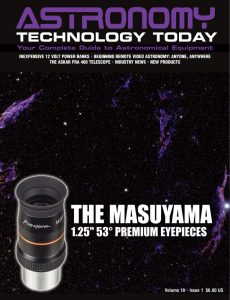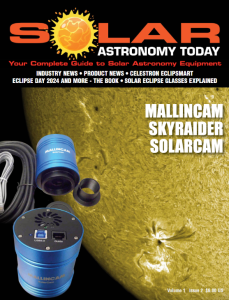The StellarPrint Vixen Style Dovetail Clamp for ASI Air from ASC is crafted from FormFutura ApolloX filament – an industrial-grade ASA filament – and offers a robust solution for securely mounting the ZWO ASIAir.
 Designed to fit Vixen style dovetails ranging from 42mm to 48mm, it ensures a perfect fit for a wide array of telescopes. The clamp’s red ASA plastic is chosen for its impact and UV resistance, guaranteeing durability and a matching look with your ASIAir unit. Its design minimizes the risk of cable snags, enhancing a setup’s efficiency and safety.
Designed to fit Vixen style dovetails ranging from 42mm to 48mm, it ensures a perfect fit for a wide array of telescopes. The clamp’s red ASA plastic is chosen for its impact and UV resistance, guaranteeing durability and a matching look with your ASIAir unit. Its design minimizes the risk of cable snags, enhancing a setup’s efficiency and safety.
The StellarPrint Vixen Style Dovetail Clamp for ASI Air dimensions are: Length – 80mm, Width – 63mm, and Height – 27.23mm, offering a compact size to integrate with a wide variety of equipment. It is designed to fit Vixen-style dovetails from 42mm to 48mm in width, offering broad compatibility with a variety of telescopes.
The reason the StellarPrint Dovetail Clamp is fabricated from ASA plastic is its superior qualities over conventional materials like PLA. Its impact resistance ensures durability, while temperature resistance makes it ideal for storage in various conditions. Additionally, the UV resistance guarantees the clamp retains its integrity over time.
Installation is straightforward and requires no specialized tools. Simply use the existing screws that come with finder dovetail brackets to attach the clamp to the bottom of the ASIAir unit. With the flexibility to mount the device lengthwise or sideways, it offers a streamlined and secure setup.
You can learn more about the StellarPrint Vixen Style Dovetail Clamp for ASI Air here.

 And to make it easier for you to get the most extensive news, articles and reviews that are only available in the magazine pages of Astronomy Technology Today, we are offering a 1-year magazine subscription for only $6! Or, for an even better deal, we are offering 2 years for only $9. Click here to get these deals which only will be available for a very limited time. You can also check out a free sample issue here.
And to make it easier for you to get the most extensive news, articles and reviews that are only available in the magazine pages of Astronomy Technology Today, we are offering a 1-year magazine subscription for only $6! Or, for an even better deal, we are offering 2 years for only $9. Click here to get these deals which only will be available for a very limited time. You can also check out a free sample issue here.
The Sun is more active than it’s been in years and if that’s not enough, we have the upcoming Total Solar Eclipse on April 8, 2024! If you’d like to learn more about the technology behind solar observing, solar imaging and more, you can check out our new monthly magazine – Solar Astronomy Today. It’s free to read, no subscription needed and available here. And if you are preparing for the upcoming eclipses and want to know your equipment options from solar glasses to the most out of this world solar viewing and imaging options, check out our free publication – The Definitive Guide to Viewing and Imaging the Sun – simply click here and enjoy reading!

